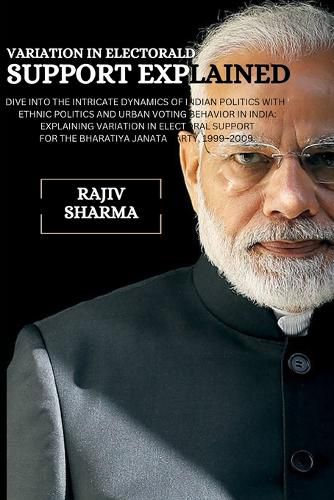Readings Newsletter
Become a Readings Member to make your shopping experience even easier.
Sign in or sign up for free!
You’re not far away from qualifying for FREE standard shipping within Australia
You’ve qualified for FREE standard shipping within Australia
The cart is loading…






This title is printed to order. This book may have been self-published. If so, we cannot guarantee the quality of the content. In the main most books will have gone through the editing process however some may not. We therefore suggest that you be aware of this before ordering this book. If in doubt check either the author or publisher’s details as we are unable to accept any returns unless they are faulty. Please contact us if you have any questions.
For many Indians, the rise of the Bharatiya Janata Party (BJP) in the 1990s was and continues to be a highly controversial addition to Indian electoral politics. The BJP has advocated a vision of Indian national unity through the concept of Hindutva, which many believe does not equally embrace or represent all ethnic or religious groups, and contrasts sharply with India's constitutional mandate as a secular democratic republic.1
The BJP's electoral strategy in the late 1980s and early 1990s to mobilize social and political support for building a temple for the Hindu deity, Lord Ram, in Ayodhya, in particular has been deeply criticized for inciting violence between Hindus and Muslims. In December 1992, following a yatra (religious pilgrimage) and kar seva (religious services) organized by the BJP and other Hindu organizations to initiate the construction of the Ram temple, thousands of Hindu nationalists tore down the Babri mosque in Ayodhya, triggering months of communal violence and rioting throughout the country.
$9.00 standard shipping within Australia
FREE standard shipping within Australia for orders over $100.00
Express & International shipping calculated at checkout
This title is printed to order. This book may have been self-published. If so, we cannot guarantee the quality of the content. In the main most books will have gone through the editing process however some may not. We therefore suggest that you be aware of this before ordering this book. If in doubt check either the author or publisher’s details as we are unable to accept any returns unless they are faulty. Please contact us if you have any questions.
For many Indians, the rise of the Bharatiya Janata Party (BJP) in the 1990s was and continues to be a highly controversial addition to Indian electoral politics. The BJP has advocated a vision of Indian national unity through the concept of Hindutva, which many believe does not equally embrace or represent all ethnic or religious groups, and contrasts sharply with India's constitutional mandate as a secular democratic republic.1
The BJP's electoral strategy in the late 1980s and early 1990s to mobilize social and political support for building a temple for the Hindu deity, Lord Ram, in Ayodhya, in particular has been deeply criticized for inciting violence between Hindus and Muslims. In December 1992, following a yatra (religious pilgrimage) and kar seva (religious services) organized by the BJP and other Hindu organizations to initiate the construction of the Ram temple, thousands of Hindu nationalists tore down the Babri mosque in Ayodhya, triggering months of communal violence and rioting throughout the country.